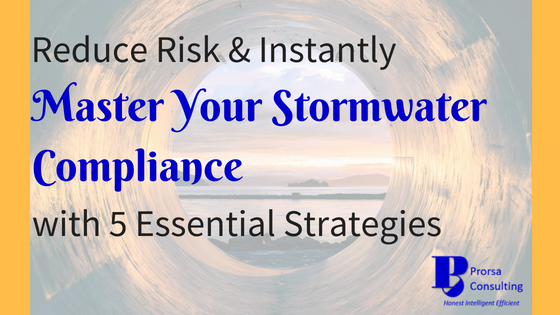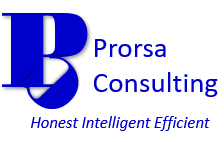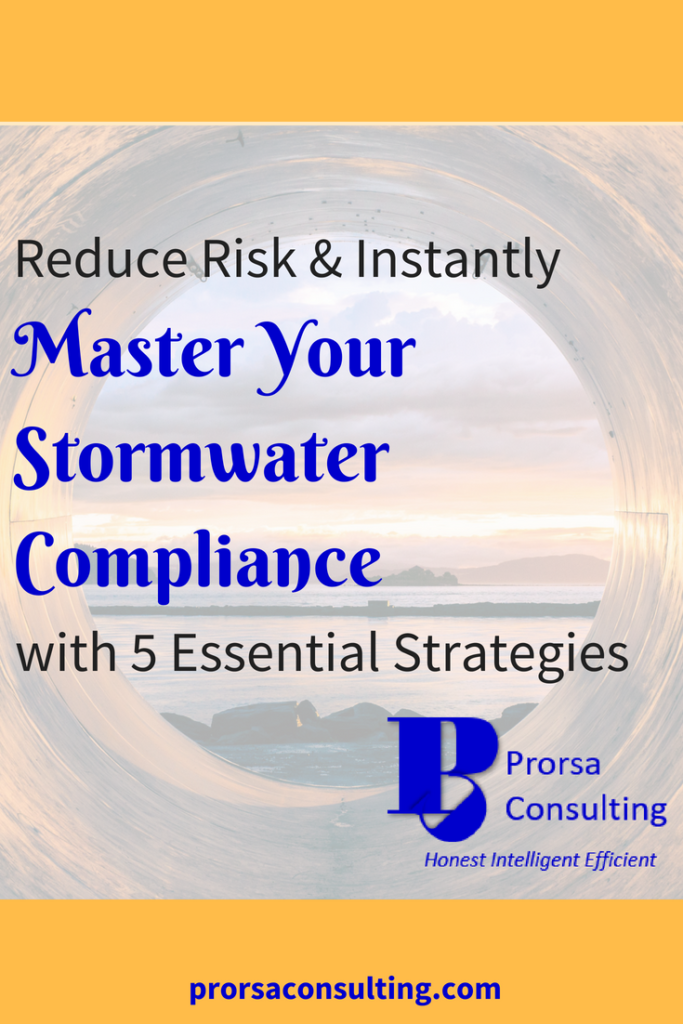Reduce Risk & Instantly Master Your Stormwater Compliance with 5 Essential Strategies
By : Admin -

If you possess a stormwater permit, you have regular activities that need to be completed for compliance.
However, I have witnessed many facilities not giving stormwater its due attention during my career, which open sites to potential enforcement risk.
The essential strategies outlined below will assist in reducing this risk by making sure you have some general knowledge to master stormwater compliance at your site.
Stormwater Compliance Strategy 1: Make Sure Your Permit Is Current
Industrial sites discharging stormwater offsite must have a permit.
This permit provides general or individual authorization to discharge stormwater from the facility.
Moreover, the EPA, state, or local agency issues the permit dependent on the site’s location.
Facilities whose stormwater discharge is not exposed to potential pollution from onsite activities may qualify for No Exposure Certification (NEC).
In these cases, the site gets an exemption from various permit requirements as long as industrial activities, materials, and wastes remain unexposed to stormwater.
Permit coverage and NECs stay valid usually for 5 years.
Additionally, regulated entities must renew coverage before or at permit expiration for continued authorization.
As such, sites should track their permit expiration dates to make certain they still have coverage.
If your authorization was issued more than 5 years ago, your site may have out of date coverage.
Stormwater Compliance Strategy 2: Ensure You Have a Written SWP3 That Meets Requirements
Effective stormwater management starts with your stormwater pollution prevention plan (SWP3).
Regulations mandate the creation of a SWP3 for those seeking authorization to discharge.
The SWP3 covers all the stormwater pollution prevention activities undertaken at the facility.
Moreover, the SWP3 needs to change as site conditions change.
Stormwater regulations and permit language dictate the content of SWP3s.
As such, plans will vary depending on your regulator’s general or individual permit requirements.
Nevertheless, the major components of the SWP3 generally include the following:
- Identification of a Stormwater Pollution Prevention Team
- Site Description
- Information on Potential Pollutant Sources
- Control Measures Employed to Manage Stormwater
- Schedules and Procedures
- Additional Documentation Pertaining to Other Specified Laws
As one would expect, permits and regulations detail the specific information under each category in the SWP3.
Sites should ensure their written plans adequately address all required SWP3 components.
In addition, sites must undergo a comprehensive review of the SWP3 at least annually.
If a generalized checklist would be of help in the assessment of your site’s SWP3, you can access a form developed by Prorsa Consulting here.
Stormwater Compliance Strategy 3: Perform Required Inspections and Monitoring in a Timely Manner
Your site’s SWP3 will outline required inspection and monitoring schedules and parameters.
Stormwater management includes multiple types of inspections and monitoring on differing schedules.
Therefore, missing assessments can be easy if they are not tracked and some sort of follow-up mechanism isn’t implemented.
When managing stormwater compliance, the individuals responsible for inspection and monitoring tasks must know their assigned duties.
Additionally, facilities should use method to track when these tasks must be completed.
The tactics introduced in my recent post on compliance reporting can apply to your stormwater management program to reduce the chances of missed inspections or monitoring.
Remember, an inspection or monitoring event did not happen if it’s not documented.
Moreover, make sure your reports for these activities clearly identify the person performing the task and the date/time of the assessment.
Stormwater Compliance Strategy 4: Don’t Forget about Keeping Your Stormwater BMPs in Working Order
You can’t prevent stormwater pollution when your controls are not maintained properly.
Pollution controls, or best management practices (BMPs), can be structural or procedural in nature.
In either case, they need routine attention to ensure proper prevention & control of stormwater pollution.
Check out some tips below to assist with maintaining your stormwater BMPs:
- Service vehicles and equipment on the manufacturers recommended schedule to prevent spills and leaks.
- Empower employees to correct potential stormwater housekeeping issues as they find them.
- Make certain secondary containment structures are kept free of trash and debris. Drain captured stormwater from these structures as needed to maintain effectiveness.
- Keep spill kits properly stocked and respond to spills as they occur.
- Remove sediment from stormwater detention/retention structures and sediment traps when needed to preserve the controls’ effectiveness.
- Repair drainage features (berms, swales, ditches) when needed to minimize exposure of stormwater to pollutants.
For more information on BMPs, try reviewing Best Management Practices for Industrial Stormwater Pollution Control.
Stormwater Compliance Strategy 5: Keep Up to Date on Stormwater Employee Training
Employees can prevent stormwater pollution with awareness of the potential for stormwater contamination and how to combat it.
Therefore, workers should receive awareness training on at least an annual basis.
At a minimum, train employees to know:
- How their job duties are impacted by the SWP3 (i.e. potential pollutant sources, housekeeping practices, monitoring of BMPs, fueling practices, etc.)
- Who serves on the Stormwater Pollution Prevention Team
- Spill prevention and response procedures, including the locations of spill kits
- Lessons learned from past spills or non-authorized discharge events
Employee training must be documented for stormwater compliance.
Be sure to retain training records with the SWP3 and make them readily accessible for review.
Related Pollution Prevention Articles You May Want to Visit
Environmental Pollution Prevention Strategies You Should Try Before Treatment
SPCC Regulations: Know the Applicability Rules for Lasting Compliance
Wrapping It Up
In conclusion, EHS professionals can rest easier when a stormwater management program is well implemented.
However, as with all compliance tasks, it requires some attention to make it work.
Try implementing the strategies discussed in this post to keep your enforcement risk in check by mastering your stormwater compliance.
Prorsa Consulting wants to assist you with your EHS compliance, analysis, and management system needs. Check out our Services page for more information.
We always encourage your feedback on this blog’s content. If you found this information useful, be sure to like and/or share below! Also, you can give your feedback via our Contact Us page.
Follow Prorsa Consulting on LinkedIn, Pinterest, and Twitter for regular content updates.
Also, don’t forget to take advantage of the free templates, checklists, presentations, and more contained in our resources library. You can gain access by signing up below for the free Prorsa Consulting Newsletter!

